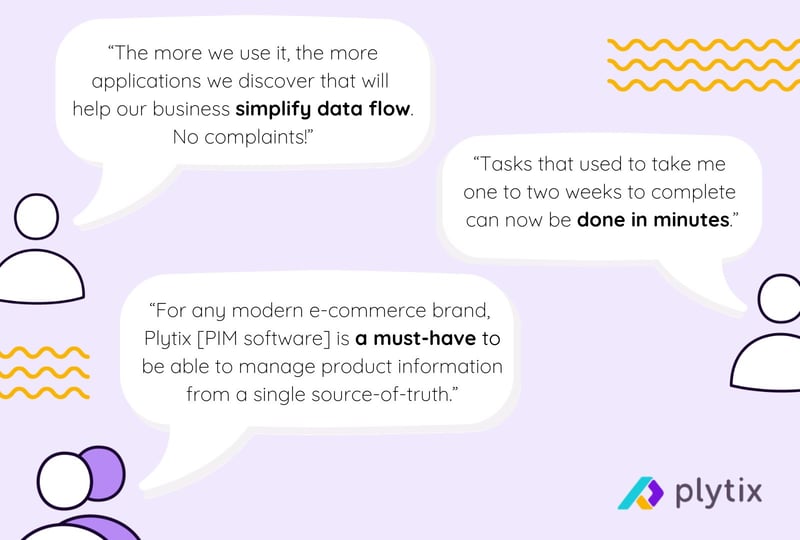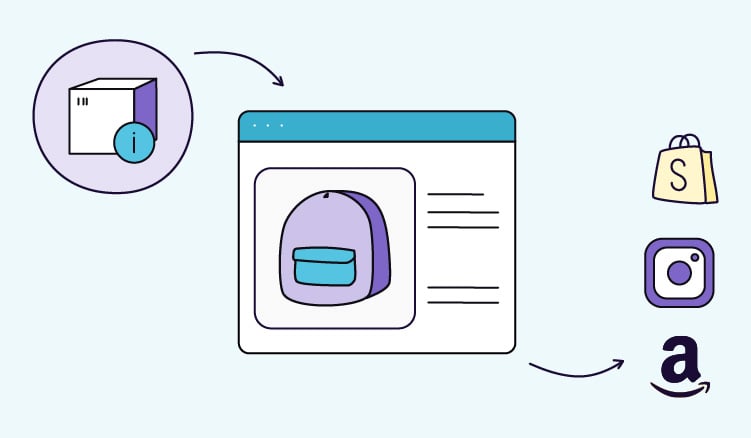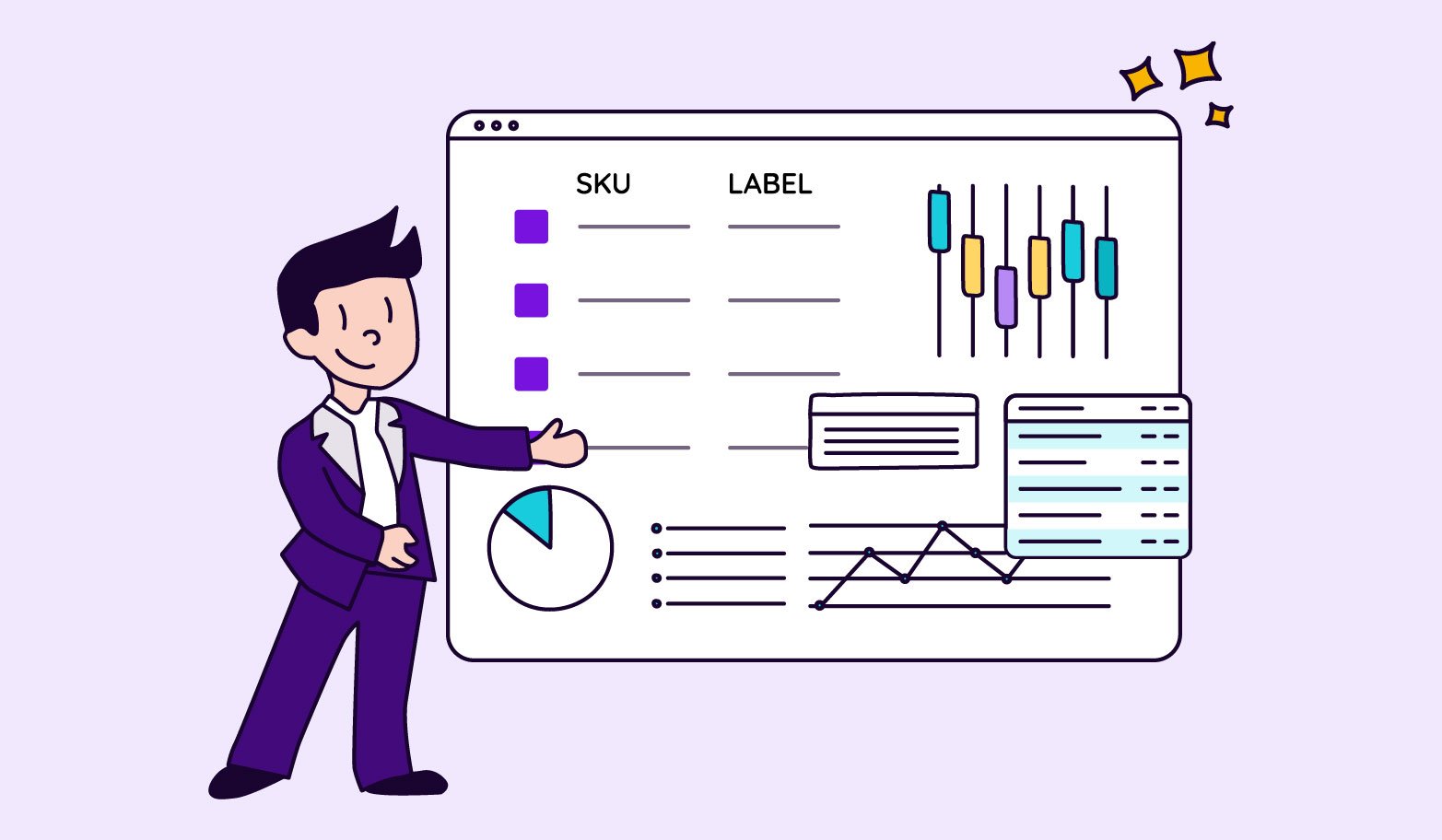Product information management software is on the up! The industry as a whole is predicted to see a compound growth rate of 14% year on year between 2023 and 2030, and it’s not hard to see why. More and more people are seeing the benefits of introducing PIM software into their tech stack when selling online—here’s what some new PIM users have told us lately:

But who stands to gain the most from PIM software within an organization? Could it help you and your department? Keep reading to find out, as in this article we're diving into the types of teams that frequently use PIM software and how it enhances their day-to-day operations.
PIM for ecommerce and data teams
Given we’re talking about software that’s mainly used for ecommerce data, it’s not surprising that some of the most frequent PIM users are ecommerce and data teams. We’re talking about whoever in your company has the task of organizing and maintaining your product information, and depending on the size and structure of your organization, this could be a job for your ecommerce manager, someone else on the ecommerce team, or even a whole other manager or team who have the sole job of looking after your product information.
PIM software comes in helpful in this department in so many ways, but here are the ones at the top of our list:
- Gathering all your product information into one central hub
- Organizing your data and assets into groups, categories, and so on
- Filtering through the data mountain to make product lists, either manually or automatically
- Making sure all your company’s product data is consistent and accurate
- Sharing access to enable collaboration between different contributors (including suppliers and vendors from outside the company)
- Sending data out to everywhere that you sell
- Updating information that’s already been sent out on a regular schedule when possible
…and so much more. Honestly, if you’re in charge of monitoring and maintaining product data at your company and then getting it where it needs to be, PIM software could make your life easier in, well, more ways than we have time and space for here. Instead, why not have a look at this handy ebook full of information about PIM systems and everything they can do for your data?
PIM for marketing, SEO, and branding
Don’t let the "data" focus fool you, though—PIM software can be a game-changer for marketing, branding, and SEO departments as well.
Ever tried to launch a synchronized marketing campaign across multiple channels but without having one central source of product data for everyone to use for reference? If you have, you'll know it's a nightmare, with emails, social media, and online ads all presenting similar but different versions of your products and their data. This ultimately gives potential customers the impression that your company doesn’t know what it’s doing—not quite the professional image you want, I’m sure.
PIM software helps avoid all this stress, mess, and distress, by giving these departments the potential to:
- Ensure that product descriptions and features are uniform across all platforms
- Have everyone work from the latest, most accurate product data
- Set up automatic updates across different marketing and sales channels
- Extract data from the PIM to generate content for SEO
- Store SEO content once it’s been generated
- Centralize digital assets (images, videos, audio, and so on)
PIM for designers and creatives
Speaking of digital assets, a PIM tool with DAM (digital asset management) capabilities makes your design team’s lives so much easier too. Just like with product information, keeping digital assets like images and videos scattered around a bunch of different databases makes it significantly harder for your designers to make sure everything is kept consistent and up-to-date across the board.
Back on the data side of things, when product information is fragmented and uncoordinated, your creative team can find themselves spending hours scavenging for data when they’re trying to produce new assets—not a great use of their time.
A PIM tool gives them:
- A central database where they can find information and inspiration (inspormation? infpiration?)
- A handy place for them to store their finished works
- A convenient way to share their work with other departments and facilitate collaboration
PIM for customer service teams
Ever tried calling a company helpline, only to be connected to someone who didn’t know what they were talking about and couldn’t help you as a result?
If so, did that make you want to:
- definitely use that company again in the future
- write them a glowing review and share it online
- give up and throw their product into the sea
Okay, so maybe I’m exaggerating a little, but you get the idea. Whether you’re an established player or just starting to build your brand, quality customer service is essential, and access to accurate, up-to-date product information is a fundamental part of providing that for your customers.
With PIM software, customer service teams can:
- Access comprehensive and up-to-date product information in real-time
- Speeds up the resolution process
- Improve customer satisfaction
- Reduce the likelihood of customers throwing your product into a large body of water
Imagine a world where every customer service agent can instantly answer any query you throw at them about a product's features, availability, or even its future updates—sounds like a dream come true, right? Not the most exciting dream, sure, but still—it’d be handy!
PIM for sales teams
Let's not forget about the folks on the frontlines of the fight for financial success—your sales teams. Much like with customer service, one of the last things a customer wants to hear when chatting with a salesperson is “I don’t know,” which is why sales reps can benefit tremendously from having real-time access to product information.
Having access to a detailed, centralized, and up-to-date database through PIM software lets salespeople:
- Answer questions and address concerns on the fly
- Be more effective at their job in general
- Close more of those all-important deals
- Provide a better customer experience
- Get an overview of what marketing materials are currently in circulation
- Host personalized sales catalogs for individual prospects
PIM for IT managers and developers
Another knowledgeable team that interacts with this tech on a regular basis is IT, a.k.a. your friendly neighborhood devs. While they’re unlikely to actually use the features of the software itself (they’re not normally super bothered about product information, for some reason), your local IT team will often be the ones responsible for dealing with the technical side of the PIM on your end.
A large part of this duty is getting your company’s choice of PIM system to communicate effectively with the other systems you have in place, so ERP systems, supplier databases, ecommerce platforms, and so on—depending on the PIM in question, this can be a daunting task. If they’re really unlucky, your devs might even get asked to build a custom PIM solution for your company. Building a PIM system from scratch is a massive, complicated, time-consuming job—trust me, we’ve done it. What’s more, these custom PIM tools can often end up being too complex for regular users, which leads to poor adoption rates and all that hard work going to waste.
So how can you make life easier for these long-suffering system saviors? Simple—look for a PIM tool that’s known for having:
- A range of integration options and APIs (to facilitate smooth data transfers both in and out of the PIM)
- High-level tech support on the PIM end of things
- User-friendliness and ease of use, both for them and so that other departments don’t need as much help
And unless it’s really, really necessary, please don’t make them build a PIM tool from scratch! Honestly, making your devs build complicated software for no reason is just mean.

Look how sad he is. (Source)
PIM for CEOs and directors
The C-suite is where the big-picture problems manifest, so CEOs and Directors are acutely aware that out-of-sync product data isn't just an inconvenience; it's a scalability issue. Sure, they might miss the days when an Excel spreadsheet was all they needed to keep track of the data for their first few products. And yes, life was definitely simpler when they were only selling in one place and only had to worry about keeping that one storefront up-to-date.
If the business is going well, though, those days are over, and now there’s an extensive catalog of product information that needs constant upkeep and care, and that then needs to be shared with a smorgasbord of different webshops, marketplaces, price comparison sites… you name it. Don’t get me wrong, that one spreadsheet did its job at the time (and will always have a place in our hearts), but as the head honchos know, when you start getting into the big leagues, it’s time to up your software game.
Enter PIM, providing CEOs and directors with:
- The convenience of having all your data in one place (like that old spreadsheet, but bigger and better)
- Advanced tools to help organize and filter all that new data
- A bird’s-eye view of everything going on with your data and assets
- An eagle-eye view of just the data and assets you need to see at any specific moment
- Immediate access to the latest, most relevant product information when making big decisions
For modern executives who understand the value of efficiency and accuracy, adopting a PIM tool isn't just a strategic move—it's an indispensable asset.
PIM for other departments
Of course, there are plenty of other use cases for this Swiss Army knife of software. Retailers and distributors can use it in a similar way to ecommerce and data teams, or even to feed data back to their suppliers in some cases. Supply chain and logistics teams work mainly with ERP software, it’s true, but integrating that tool with a PIM system will take a whole load of work off their hands. Regulatory and compliance officers can use PIM to ensure product information meets industry standards and regulations, and to quickly update product information in response to regulatory changes. The possibilities are endless.
Wrapping Things Up
No matter what your department, when it comes to data, everyone wants the same thing: To deal with it as quickly and easily as possible. Fragmented data, cumbersome manual processes, inconsistency, and lack of automation are the obstacles standing in our way, and these challenges don't just exist in isolation—they often feed into each other, creating a vicious cycle that's hard to break.
That’s where PIM software comes in, helping you alleviate these bottlenecks by centralizing product information, automating workflows, and generally creating a more streamlined, collaborative environment across all the various departments within your organization.
So if you find your role mentioned above, or if any of these situations and challenges sound a little bit too familiar, then boy, do we have an ebook for you:
Frequently Asked Questions
PIM (Product Information Management) software allows businesses to centralize, optimize, and distribute product data. If your company is scaling or dealing with numerous product listings across various platforms, PIM simplifies data management and ensures consistency.
While they’re fine for the early days of startups with very small inventories, spreadsheets become impractical as product listings grow. PIM software automates many processes, integrates with various platforms, and provides real-time data updates across the organization.
Absolutely! While larger businesses may feel the pinch of unmanaged product data more acutely, PIM offers scalability. It's beneficial for startups and SMBs looking to grow, ensuring they have a streamlined process in place from the start.
Modern PIM software offers a range of integration options and APIs. This ensures seamless data transfers between the PIM system and other platforms like ERPs and supplier databases. PIM tools offer a range of data distribution options too, letting users quickly send product information to ecommerce platforms and marketplaces.
PIM solutions are designed to be user-friendly. While there's a learning phase, most providers offer training, tutorials, and support to ensure your team can efficiently utilize the software. Pro tip: Look for a PIM company with a reputation for providing excellent support throughout the onboarding process by searching on popular review sites like G2.
Yes, many PIM systems come with DAM (Digital Asset Management) capabilities, allowing businesses to store and manage product images, videos, and other media, ensuring brand consistency.
Security is a priority for PIM providers. Most solutions offer encryption, regular backups, and robust access controls to ensure your data is safe.
Yes, leading PIM solutions are built to support businesses that operate internationally, offering multi-language and multi-currency features to cater to diverse markets and help you overcome the challenges of selling internationally on platforms like Shopify.
Implementing PIM is designed to be as smooth as possible. While there's a setup phase, the long-term benefits of streamlined operations and efficiency outweigh the initial setup time.
PIM software pricing can vary massively, depending on the provider in question. Whatever the case, it’s recommended that you look for a company with transparent, fair pricing policies that can be adjusted to each PIM customer’s use case. That way, you won’t end up paying for features that you don't use.






